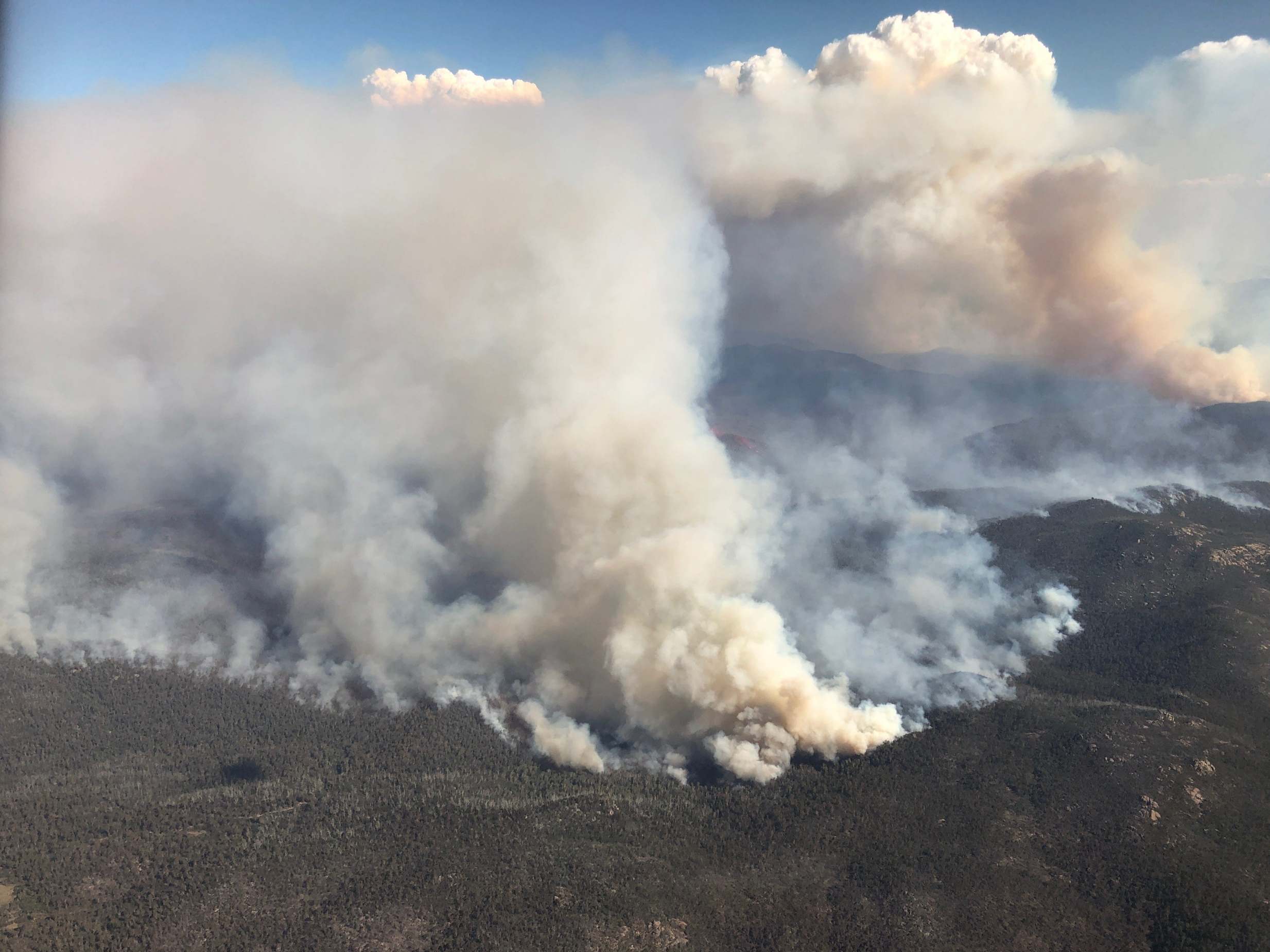This website uses cookies so that we can provide you with the best user experience possible. Cookie information is stored in your browser and performs functions such as recognising you when you return to our website and helping our team to understand which sections of the website you find most interesting and useful.

Australia has changed the rules of its Working Holiday Visa scheme to allow young Britons to count volunteering in bushfire-ravaged areas towards obtaining a second or third year visa.
The 417 visa allows all British passport holders from 18 up to the age of 30 inclusive to live and work in Australia for 12 months.
To apply to stay for a second year on the same visa, applicants are required to do 88 days of work (or six months when applying for a third year visa).
However, as of 17 February 2020, the Australian government has ruled that volunteering in areas affected by the recent devastating bushfires can also be accepted as “work”.
As an additional incentive, those choosing to volunteer can stay in the same position for up to a year – previously, it was limited to six months per post.
Created with Sketch.
Created with Sketch.
1/21
Philippe Ravenel poses for a photo in front of the remains of his house after it was burnt in a bushfire, in the town of Cobargo, New South Wales, Australia, on January 13, 2020
Photos Reuters
2/21
Volunteers arrange donated clothes at a centre that has been turned into an unofficial donation point in the town of Cobargo
Reuters
3/21
Children play inside an Australian Army forces vehicle that was expedited to help with the recovery of the town following the bushfires, during a gathering at the town's pub to commemorate the loss of three members of the community and honour the efforts of the local firefighters
Reuters
4/21
A teapot salvaged from the house of Philippe Ravenel, whose home was burnt in a bushfire, stands among some of his other belongings
Reuters
5/21
A man sits on a bench as caravans and tents of evacuees are parked at a showground that was turned into an unofficial evacuation centre
Reuters
6/21
Two women embrace during a gathering in the town's pub
Reuters
7/21
Tim Salway, a fifth-generation dairy farmer who lost both his father and brother in the bushfires, stands in his farm in Wandella, near the town of Cobargo
Reuters
8/21
A firefighter's suit hangs on the fence of a property next to a sign that reads "Thanks guys"
Reuters
9/21
Rod Dunn who is a builder, stands outside a borrowed caravan that he is now living in with his wife Kath Dunn, after they lost their home in a bushfire
Reuters
10/21
Donated clothes and blankets are piled outside an unofficial donation point
Reuters
11/21
The Cobargo town sign that was burnt in a bushfire
Reuters
12/21
A note that reads "Post Apocalyptic Fiction is moved to Current Affairs" is posted on the window of a bookshop
Reuters
13/21
People listen to a speech during a gathering in the town's pub
Reuters
14/21
Mark Ayliffe, captain of the Cobargo Rural Fire Service, holds his own portrait that was given to him by members of the community for his efforts in the recent bushfires
Reuters
15/21
Donated children's shoes are displayed at a centre that has been turned into an unofficial donation point
Reuters
16/21
People select donated goods at a showground that was turned into an unofficial evacuation centre
Reuters
17/21
The remains of a car, burnt by a bushfire, stands in front of a destroyed structure
Reuters
18/21
A woman carrying a child, holds a box of donated goods, at a showground that was turned into an unofficial evacuation centre
Reuters
19/21
A danger sign is hung in front of an area cordoned off by the Emergency State Services, that was destroyed by bushfires
Reuters
20/21
David Moran, a community worker from Dalmeny, climbs down a ladder as he is helped by volunteers Daniel and Stephanie Galileos to clean the solar panels on Peter Hisco's house
Reuters
21/21
People attend a gathering in the town's pub
Reuters
1/21
Philippe Ravenel poses for a photo in front of the remains of his house after it was burnt in a bushfire, in the town of Cobargo, New South Wales, Australia, on January 13, 2020
Photos Reuters
2/21
Volunteers arrange donated clothes at a centre that has been turned into an unofficial donation point in the town of Cobargo
Reuters
3/21
Children play inside an Australian Army forces vehicle that was expedited to help with the recovery of the town following the bushfires, during a gathering at the town's pub to commemorate the loss of three members of the community and honour the efforts of the local firefighters
Reuters
4/21
A teapot salvaged from the house of Philippe Ravenel, whose home was burnt in a bushfire, stands among some of his other belongings
Reuters
5/21
A man sits on a bench as caravans and tents of evacuees are parked at a showground that was turned into an unofficial evacuation centre
Reuters
6/21
Two women embrace during a gathering in the town's pub
Reuters
7/21
Tim Salway, a fifth-generation dairy farmer who lost both his father and brother in the bushfires, stands in his farm in Wandella, near the town of Cobargo
Reuters
8/21
A firefighter's suit hangs on the fence of a property next to a sign that reads "Thanks guys"
Reuters
9/21
Rod Dunn who is a builder, stands outside a borrowed caravan that he is now living in with his wife Kath Dunn, after they lost their home in a bushfire
Reuters
10/21
Donated clothes and blankets are piled outside an unofficial donation point
Reuters
11/21
The Cobargo town sign that was burnt in a bushfire
Reuters
12/21
A note that reads "Post Apocalyptic Fiction is moved to Current Affairs" is posted on the window of a bookshop
Reuters
13/21
People listen to a speech during a gathering in the town's pub
Reuters
14/21
Mark Ayliffe, captain of the Cobargo Rural Fire Service, holds his own portrait that was given to him by members of the community for his efforts in the recent bushfires
Reuters
15/21
Donated children's shoes are displayed at a centre that has been turned into an unofficial donation point
Reuters
16/21
People select donated goods at a showground that was turned into an unofficial evacuation centre
Reuters
17/21
The remains of a car, burnt by a bushfire, stands in front of a destroyed structure
Reuters
18/21
A woman carrying a child, holds a box of donated goods, at a showground that was turned into an unofficial evacuation centre
Reuters
19/21
A danger sign is hung in front of an area cordoned off by the Emergency State Services, that was destroyed by bushfires
Reuters
20/21
David Moran, a community worker from Dalmeny, climbs down a ladder as he is helped by volunteers Daniel and Stephanie Galileos to clean the solar panels on Peter Hisco's house
Reuters
21/21
People attend a gathering in the town's pub
Reuters
This is to ensure that communities in need of long-term volunteers can “take in young travellers willing to lend a hand”, according to the Australian tourist board.
For those with previous construction training or experience, this field has been added to the list of qualifying trades.
Volunteering gigs will be accepted as “work” as long as they’re in the regions most affected by the fires. These include areas in Eastern Victoria, South Eastern New South Wales and Kangaroo Island, South Australia.
Volunteers might be tasked with anything ranging from building new homes and land clearing to repairing dams, roads and railways.
The recent bushfires, the most damaging ever on record, ravaged an area the size of Iceland, claimed 29 lives and destroyed in the region of 2,500 homes.
The fires have also had a devastating effect on wildlife, with scientists estimating some 1.25 billion animals were killed in this season’s blazes.



 Africana55 Radio
Africana55 Radio 

